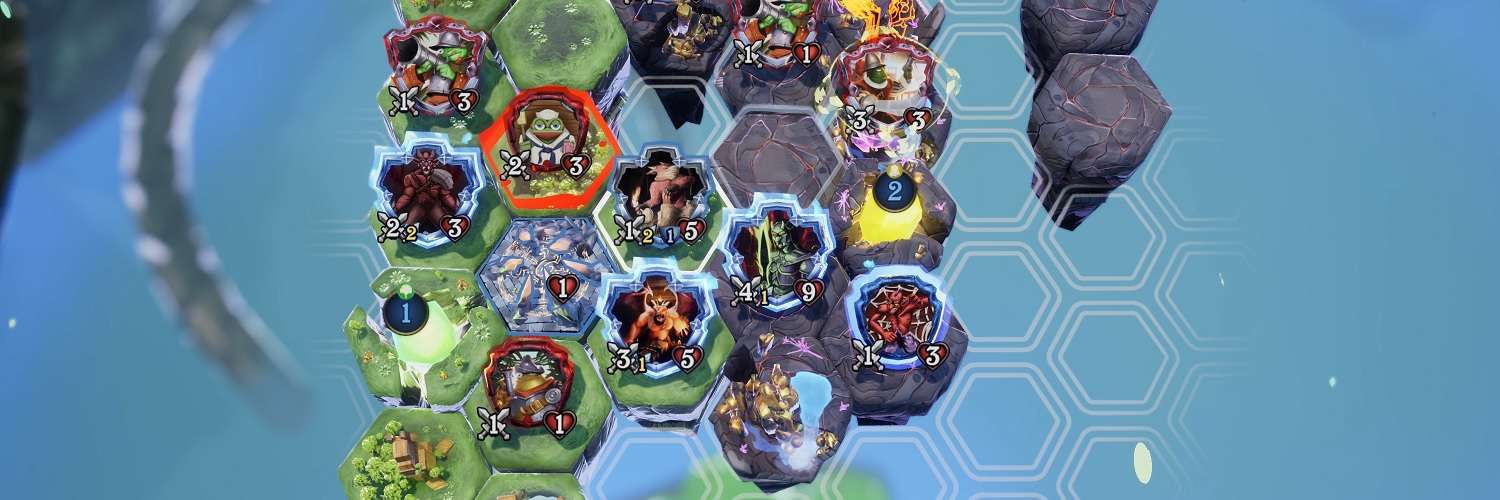
Preview – Quinterra
Ever since Blizzard’s Hearthstone landed on the scene there has been an influx of deck-building games splashing into the digital market. Such titles as Gwent: The Witcher Card Game, Shadowverse, and Magic: The Gathering Arena have spoiled us for choice. But over the last two or so years a new trend has appeared, one that blends deck-building with roguelite elements, and again is full of quality games on the market – Slay the Spire, Monster Train, and Loop Hero to name a few. Sidereal Studio is a fairly new studio that last month released their first game, Quinterra, into Steam’s Early Access program with an aim to use feedback to improve the future development of the game. This is always a good idea for a title in such a competitive market, as Quinterra will no doubt have a battle on its hand to push itself through a crowded market to show why it is worth your time.
Speaking of comparing to other games, Quinterra is undoubtedly going to have people who have not played the game make comparisons to Faeria, a game that has been on the market for a good 5 years. I would not blame people for doing that because the screenshots do not do any favours to separate the two games, as they have similar hexagon map designs and user interface placements. But that is where things end between the two, as playing the game reveals that Quinterra is rather different.

First thing to get across is Quinterra is not a collectible card game, it is a roguelite infused with turn-based tactics gameplay, and so players do not even get a chance to build a deck before setting out on an adventure. The only option at the start of each run is what species the player is. There are currently four in the game – Lycans, Imps, Crystalians, and Ethereals – but only the Lycans are available in the beginning, but after death the Imps become accessible. The other two require a run to be completed, in the case of the Ethereals, a run needs to be beaten with two other species. I assume this is to give the player an incentive to keep playing after finishing, since the species have their own starting cards that feature their species as the base, so Lycans are full of wolf-looking summons, Imps are full of demonic monsters, etc. Having a starting set of monsters based around that species does offer a little difference, but it is not as big as one might expect. Rather than just being the monsters that change, the game could do with each species having something extra, like species’ traits – could be cast every third battle, something like all units gain 1 armour for 3 turns – or at least have the species have the ability to use items that no one else can. There is a talent tree that unlocks with talent points earned from battle, but the talents felt a little underwhelming through the few runs I had. Maybe some of the more expensive ones at the bottom of the list have a bigger impact on the game. I think even throwing in some randomisation between the starting monsters would add more dynamic play as the player would not be able to predict what their hand might be on a new run.
Although I’m not sure if the last bit of that paragraph is what the developers are wanting out of Quinterra, as they specifically point out that the game is all about you and how you want to build your deck of monsters. Quinterra throws the player into a procedurally generated area where the idea is to progress through each of the nodes in a map until hitting that area’s boss. Each node is often filled with one or two battles, a shrine, or something similar to collect the reward. Occasionally there will be a shop to buy items or a guild to buy new cards to add monsters to your initial starting set, which comes from spending the gold earned for winning fights.
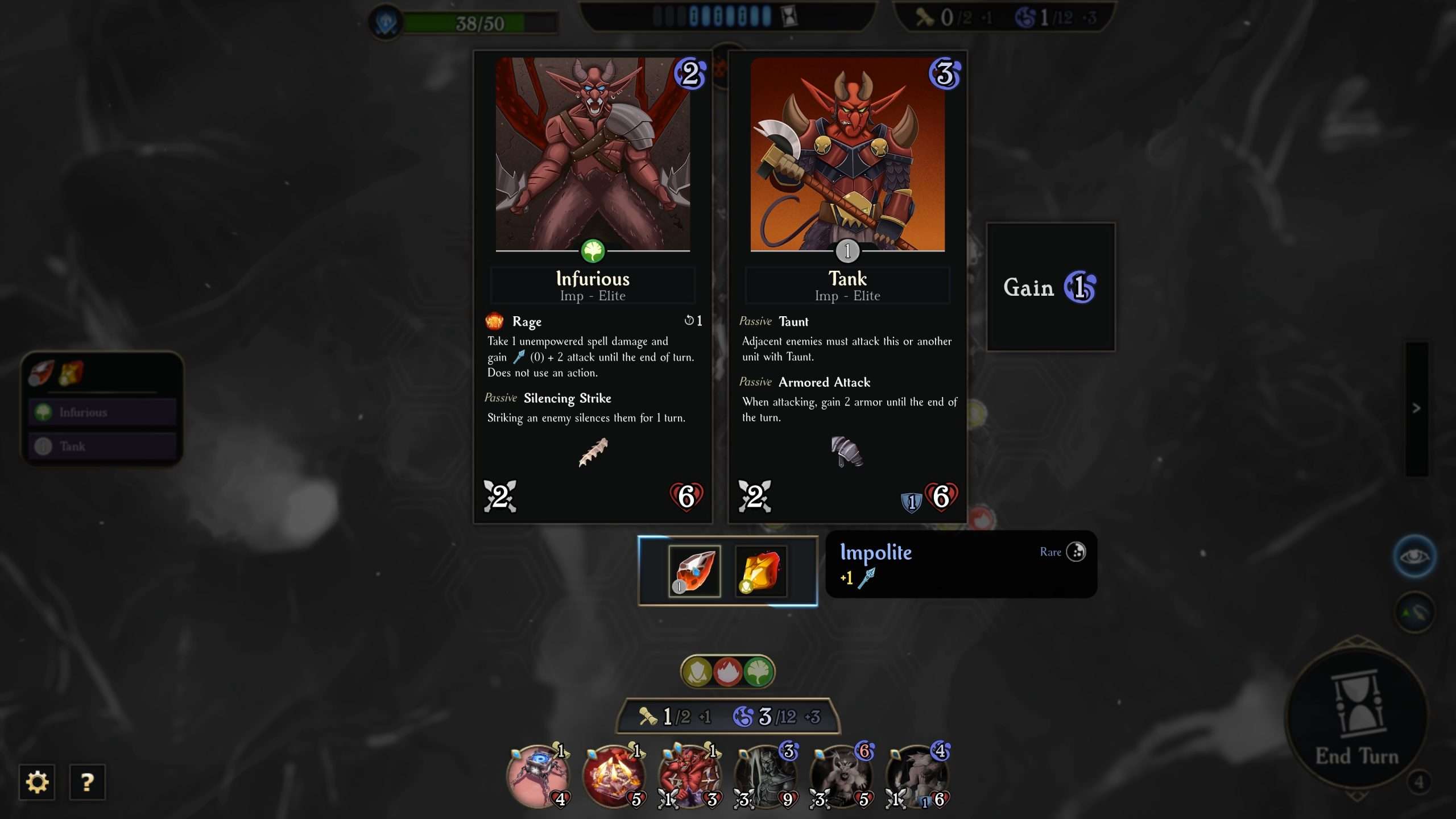
There is no requirement to what species can join your army, so towards the end of a run expect to have cards featured from all species in the game. This falls into the whole “build your own army” feature that the developers are going for, but I do feel it adds to the problem I mentioned earlier. This strips away some of the identity of the species. Literally, the only thing to split them is the starting deck of cards and their own unique structure unit that seems to be exclusive to the species. I am not sure what could be done to change this without falling out of the “build your own army” motto. Maybe allow each species to have a unique ability/trait or put a spin on how they play, for example, maybe one species gives buffs to magic users because their lore is based around a heritage of magic, or maybe have the Imps gain more defence because they love a brawl with enemies. These are just quick thoughts, but I feel the game would gain more from having the species offer something a little more.
Each battle begins with the ground formed up of a few hexagon shapes joined together. Each hexagon piece contains a source of mana, up to three types can be available from one piece of land. This is where Quinterra differs from Faerie. In the latter, the battle map is built as the player goes through the fight, but in Quinterra, sacrificing a piece of land will temporarily drop that from the battlefield while enabling the player to summon an elite monster card that is based upon that mana type. Each species has one card that is neutral so that it can be summoned by any colour, but the rest of the units require a specific type of mana to be able to summon them. The cards only require one of that mana, so the advantage comes in the form of making sure the map contains mana colours that will be pushing the battle in their favour. Mana types available are shown on a preview before jumping into battle. Once all the cards have been summoned in the player’s deck, absorbing another piece of mana from land will offer one mana point regeneration.
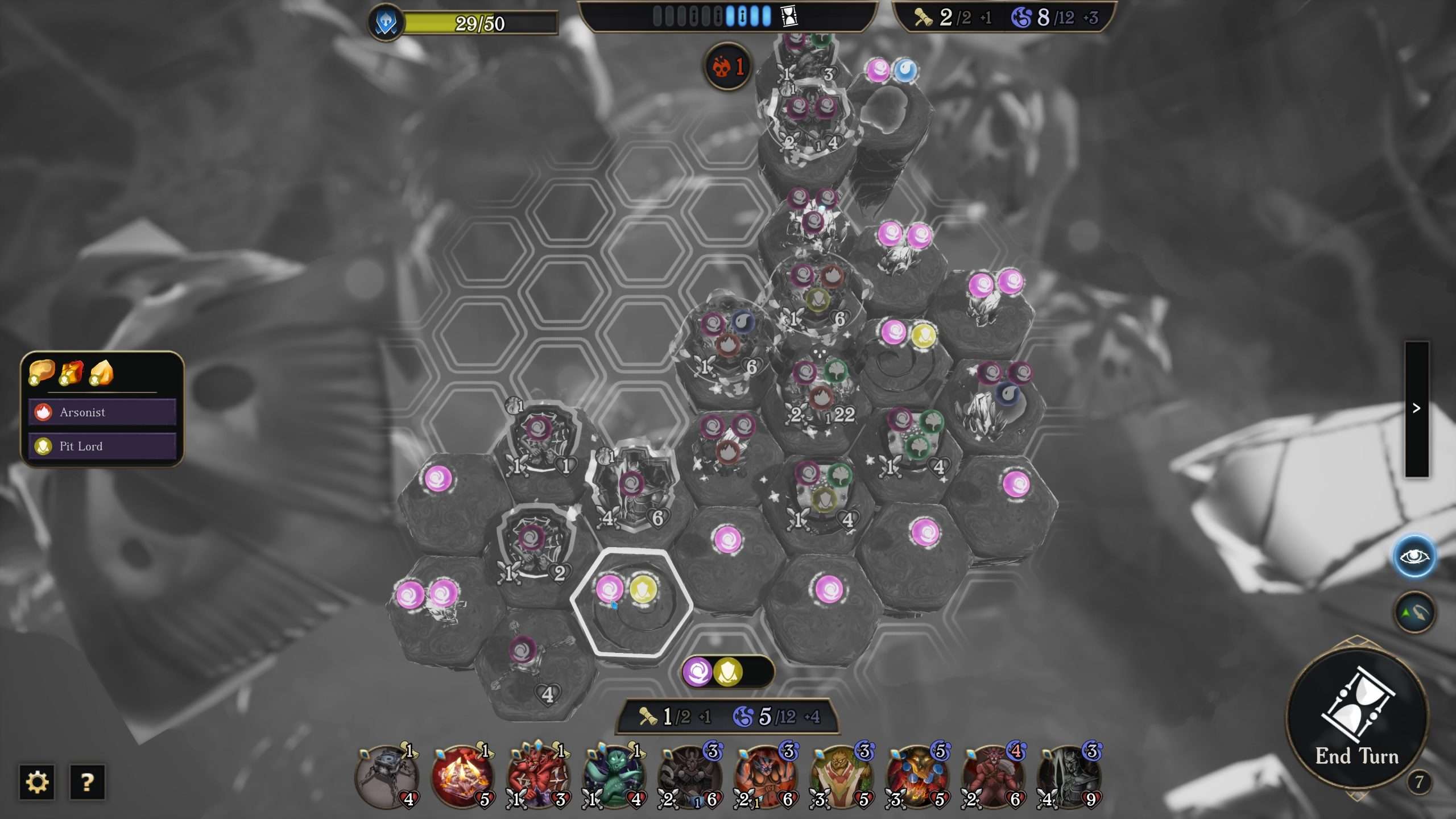
Mana points are used to put elite monsters onto the battlefield. One key feature of monster placement is that they can be placed anywhere that is empty, meaning free roam to stick them as far away or as close to the enemy as possible. Once placed, a monster can usually either move or attack once, and if the monster has an ability, that often has to wait a turn or two before it can be used. These skills could either be used in place of a turn or can be used freely without a movement cost. Only one of the same type of elite can be active at once, which stops flooding the map with the same monster, but once dead a new one can be placed onto the map if the player has enough mana for it. Along side mana is another resource that enables smaller monsters and structures, called minions, to also be summoned. The player automatically gains one of these resources each turn, while mana is usually three or more per turn depending on what is active in the fight. Apart from the structure card, other minions are not limited to one active on the map.
The same rules apply to the enemy team. This means their monsters can also be placed anywhere on the map, and they will also generate resource to keep deploying monsters against the player’s army. This adds some chaos to fights, since the freedom of deployment keeps strategy open. One thing to note is the computer does not require mana colours, and so only the player removes the land. Removing land is also part of the strategy, as this can be used to alter enemy movement, blocking routes to a player’s monster and then using long range specials to fire at the enemy over a gap in the map. There is a lot going on with battles. Factor in that each monster card can equip a piece of gear bought from the shops or that they can be summoned with crystals to give the summoning more buffs – extra health, damage or armour to protect against damage – adds ways to manipulate the cards for stronger monsters. Gear and crystals are randomly for sale in the stores, so each run can offer different ones in the early parts of the game.
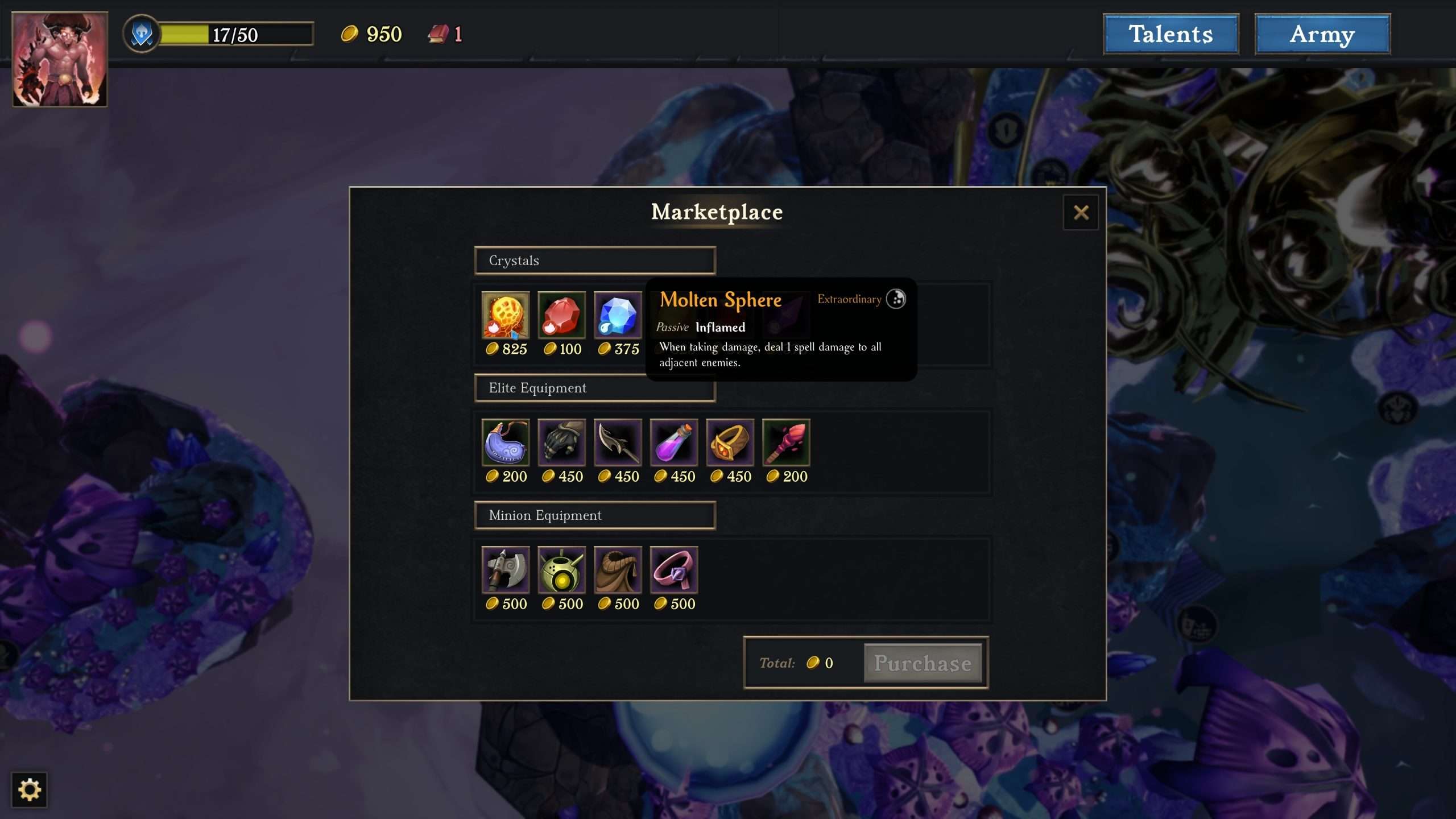
There are two types of battles – Clash and Vanquish. Vanquish is the standard eliminate the boss character, while Clash is about having more units within the different coloured hexagons to fill up the counter after each turn. More battle types could be added, since being in Early Access means the developers can tweak and build on their game to improve it, but really, at the moment, I hope they put a little more emphasis on the roguelite elements. Give the game a bit of randomisation and add things to differentiate the species, and it could give Quinterra a lure to keep on playing after finishing multiple runs. A progression system might help, maybe some sort of carry over reward, maybe a new game+ when a run is done that continues increasing the difficulty while continuing on with what was earned in the first run without dying. There are many ways to build on removing that essence of repetitiveness.
Quinterra has a solid foundation, and I look forward to seeing how the game changes and evolves through its Early Access period. I can see the game becoming an addictive recommendation if the developers manage to crack the mix between freedom of the player’s deckbuilding while making the roguelite elements a bit more prominent. Let the species have more of an impact, solve the issue with progression, and I think this will keep players wanting more. Of course, more of everything would be nice as well – more elite monsters, minions and structures, maybe more interesting damage types, as the game does seem to focus a lot of physical and long range magic, with a bit of poison on the side or buffs to increase those stats. Maybe a life-leeching species could be an interesting inclusion that has the player having to exchange health for damage, but must absorb enemy health to become more powerful otherwise their units are weak. This is just one of many thoughts I am sure the developers could implement into the game.
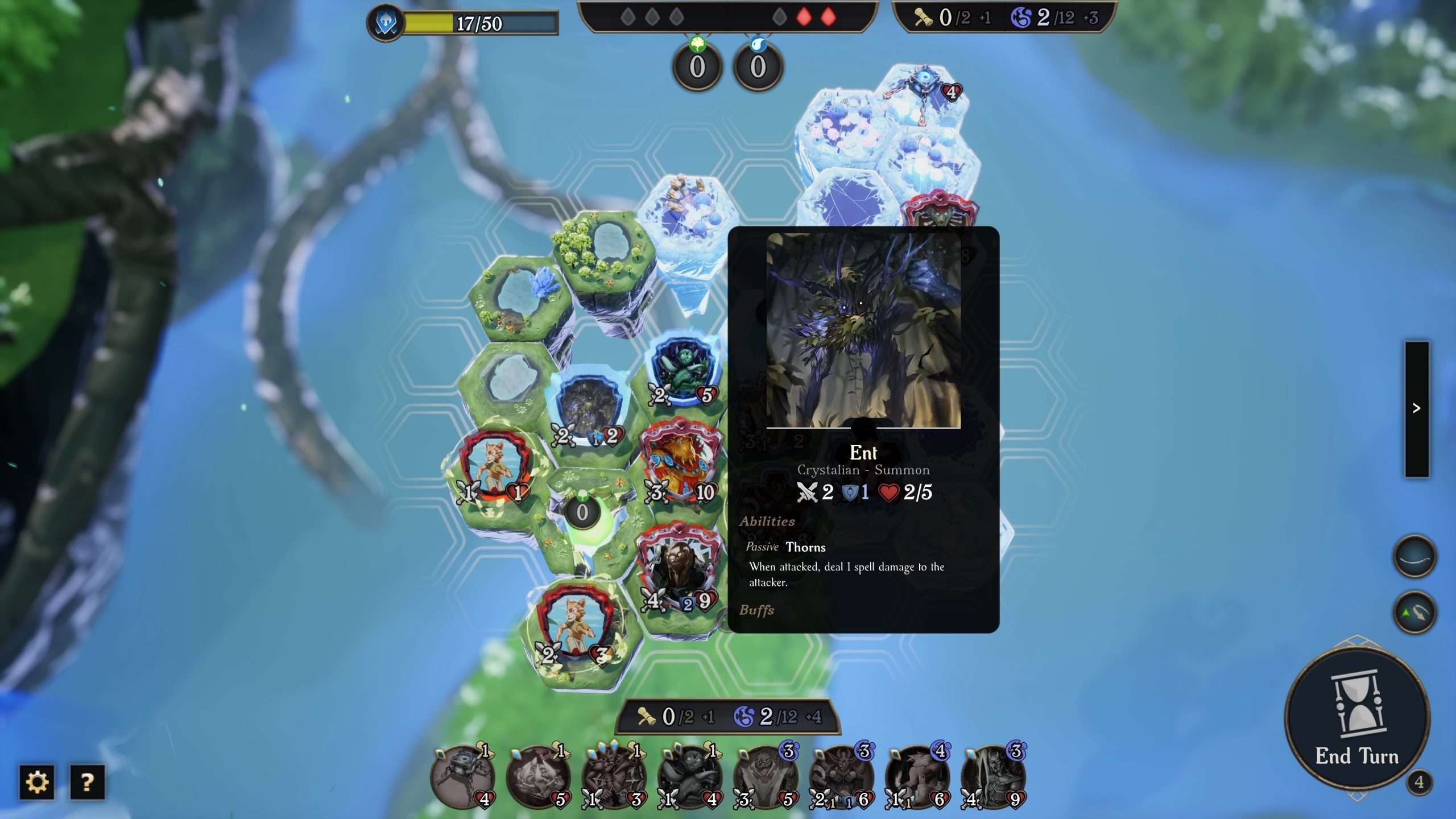
Quinterra can be found in Early Access on Steam for a wallet-friendly price of £11.39. It is estimated that the game will be in Early Access for about 12 months before releasing fully, with a roadmap planned that will add new features, tuned difficulty, more units, new encounter types, and other features to revealed at a later date.